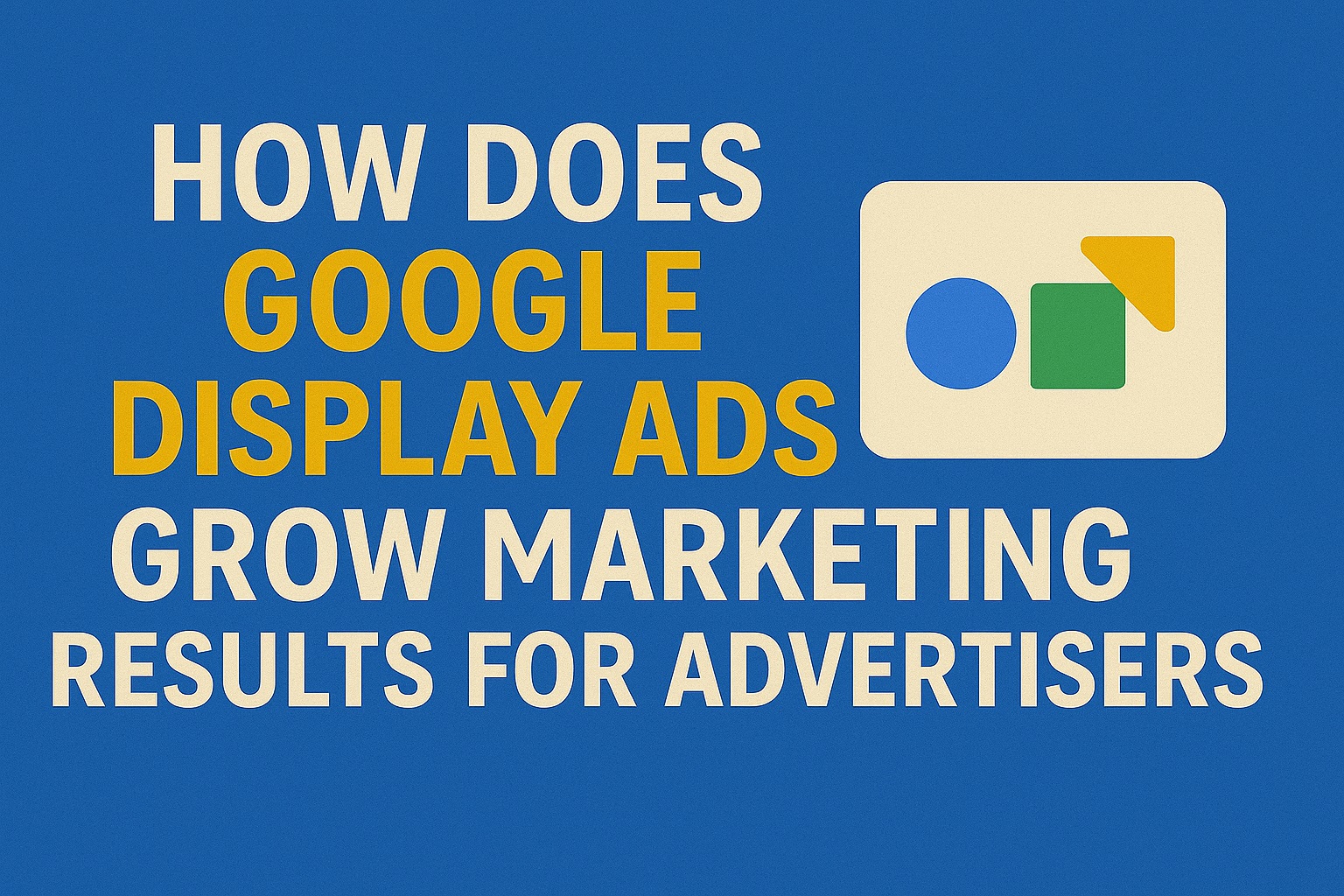Google Display Ads enable advertisers to reach audiences across millions of websites, apps, and Google platforms. These ads use visual formats to capture attention, promote brand awareness, and encourage user action. Unlike search ads that target users actively searching for information, display ads reach users earlier in their journey, expanding reach and influencing decisions. For advertisers, this makes Google Display Ads an essential tool for growing marketing performance and driving business results.
What Are Google Display Ads?
Google Display Ads are visual advertisements served across the Google Display Network (GDN), which spans over two million websites, apps, and Google-owned platforms such as YouTube and Gmail. Unlike Google Search Ads, which appear based on keywords users type into the search engine, Display Ads are shown to users as they browse online content, whether or not they’re actively searching for a product or service.
Display Ads come in various formats, including static images, responsive ads that adjust size and format automatically, and rich media ads that incorporate animation or interactive elements. This visual approach helps brands attract attention and promote messages to broad or specific audiences based on demographics, interests, and browsing behavior.
Google’s targeting capabilities allow advertisers to display ads to the right users at the right time, using methods like contextual targeting (matching ads to relevant content), audience targeting (based on user interests or intent), and remarketing (reaching people who have previously interacted with a website or app).
Key Benefits of Google Display Ads for Marketing Results
Google Display Ads offer several advantages that help advertisers grow their marketing results effectively:
Wide Reach and Precise Targeting
The Google Display Network reaches over 90% of internet users worldwide. Advertisers can target audiences based on demographics, interests, behaviors, topics, placements, and even custom intent, ensuring ads reach users most likely to be interested in their offerings.
Visual Formats That Drive Engagement
Display Ads use imagery, video, and interactive elements to stand out as users browse online. Visually appealing ads are more likely to catch attention and encourage users to engage with the brand, whether through clicks, conversions, or later search behavior.
Remarketing Capabilities
Remarketing allows advertisers to reconnect with people who have previously visited their website or interacted with their brand. This improves conversion rates by keeping the brand top of mind and encouraging return visits and purchases.
Brand Awareness Building
Even if users don’t click immediately, Display Ads help establish and reinforce brand presence across the web. This consistent exposure drives familiarity and trust, which can influence future purchasing decisions.
How Google Display Ads Improve ROI
Google Display Ads help advertisers improve return on investment (ROI) by reaching valuable audiences efficiently and optimizing performance through automation and smart bidding strategies.
Smart Bidding for Better Efficiency
Google Ads offers automated bidding strategies like Target CPA (Cost Per Acquisition) and Target ROAS (Return on Ad Spend), which use machine learning to set bids in real-time. This ensures ads are shown to users most likely to convert, helping advertisers achieve more conversions at lower costs.
Optimized Audience Targeting
Advanced targeting options allow advertisers to refine audiences over time, focusing budget on segments that drive results. By analyzing performance data, advertisers can exclude underperforming placements and audiences, allocating spend to areas that deliver the highest ROI.
Cross-Device Reach and Conversion Tracking
Google Display Ads track user behavior across devices, ensuring advertisers understand where conversions occur and how ads influence customer journeys. This visibility allows for better attribution and campaign adjustments that improve overall efficiency.
By combining automation, targeting, and performance insights, Google Display Ads enable advertisers to generate more conversions at a lower cost, maximizing marketing budgets.
Best Practices to Maximize Marketing Results with Google Display Ads
To get the most from Google Display Ads, advertisers should follow these key best practices:
Use Responsive Display Ads
Responsive Display Ads automatically adjust size, format, and appearance to fit various placements across the Google Display Network. Providing a variety of headlines, descriptions, images, and logos ensures ads appear optimally and reach wider audiences.
Refine Audience Targeting
Advertisers should use a combination of targeting methods, such as custom audiences, affinity audiences, in-market segments, and remarketing lists. Continually refining these audiences based on performance data helps improve relevance and results.
Leverage Exclusions and Placement Controls
Regularly review where ads are appearing and exclude low-quality or irrelevant placements. This improves brand safety and ensures budget is spent on sites that align with campaign goals.
Test Creative Variations
Running multiple ad creatives allows advertisers to identify which combinations of images, messaging, and calls to action perform best. Ongoing testing helps maintain engagement and optimize campaigns over time.
Monitor Performance and Adjust Bids
Frequent monitoring and adjustments based on key performance indicators (KPIs) like click-through rate (CTR), conversion rate, and cost per acquisition (CPA) ensure campaigns remain efficient and effective.
By following these practices, advertisers can improve campaign performance, reduce wasted spend, and achieve stronger marketing outcomes.
Conclusion
Google Display Ads offer advertisers a powerful way to grow marketing results by reaching large audiences, engaging users with visual content, and targeting potential customers throughout their online journey. With advanced targeting options, remarketing capabilities, and tools to optimize bids and placements, advertisers can drive awareness, boost engagement, and improve ROI. By applying best practices and closely monitoring performance, businesses can make Google Display Ads an essential part of an effective digital marketing strategy.
